News
Jim Bridger Part 2: Trapper, Shakespeare, and Fort Bridger
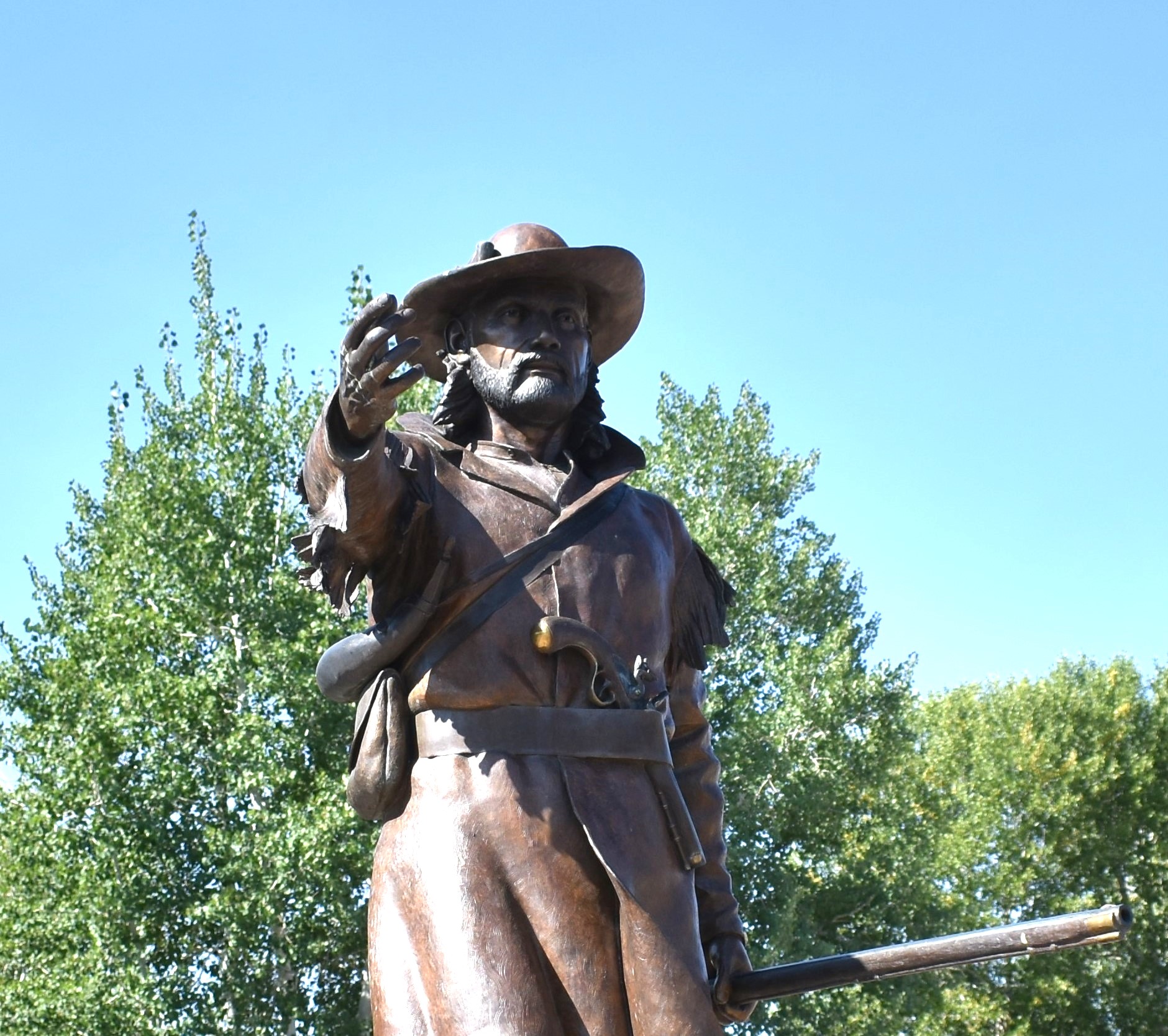
In this second part of the Jim Bridger story, we will visit his trapping days, and the establishment of Fort Bridger.
The Sheridan Post, Sunday, May 1922 talks the 1822 Ashley Expedition, accompanied by 18-year-old Jim Bridger, which explored the Rocky Mountain region in search of beaver and other valuable furs.
Ashley and Henry were aware that the system of obtaining furs from the Indian tribes through the establishment of trading posts, where the red men brought their peltries, had failed to a large extent because of three obstacles. These were the difficulty in keeping these posts supplied with goods for trading, the frequent inability of garrisons to hold the posts against hostile attacks of the red men, and the vacillating attitude of the tribes in respect to visiting the various posts with their peltries and hides. It was therefore determined that, instead of relying on Indian trade for their furs they would employ while men as trappers. In other words, under their plan, the trapper was to supplement the trader. This innovation in the fur trade was destined to have a far-reaching effect in the development of the west.
The article gives us a look at Jim Bridger who, even at such a young age …..displayed qualities that marked him as a natural leader in the wilderness. Cool-headed, daring and resourceful far beyond his years, his ability and good judgment won the respect of his employers and comrades. In person, he was tall and slender, erect and energetic. Bridger had a quiet, agreeable manner, but was somewhat reserved and expressed himself usually only after he had weighed his words well. He had keen, gray eyes with level glance. His hair was brown and long, and he looked the typical western mountain man. His courage and poise were unfailing in the face of the greatest hardships and dangers.

Others of that party who became notables were Louis Vasquez, a fur trader who knew intimately the western country and who later became Bridger’s partner; William L. Sublette, leader of many expeditions that made important geographical discoveries and a successful trader; Hugh Glass, hero of several astonishing adventures in the Upper Missouri country; Thomas Fitzpatrick, who knew the western country as well as any man excepting Bridger; David Jackson, an explorer whose name was given to Jackson’s Hole, lying south of Yellowstone Park and famed as one of the largest and most beautiful mountain valleys of the west; and Jedediah S. Smith, one of the most remarkable figures in the fur trade of the next decade, whose adventures carried him into every section of the west.
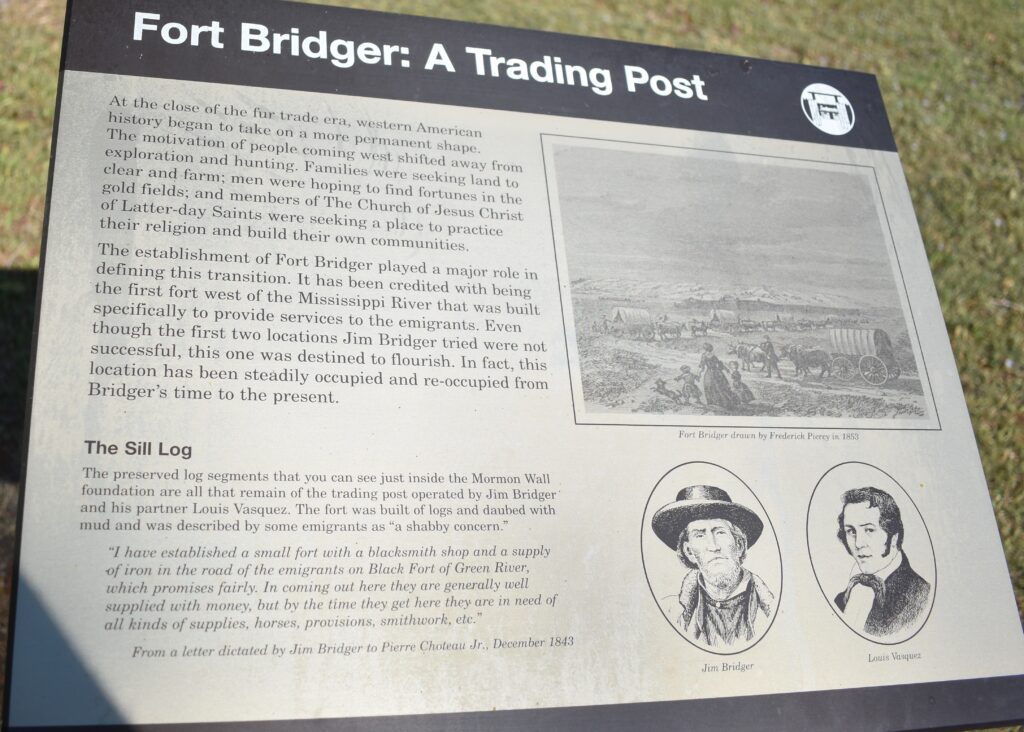
During the summer of 1824, after two years of varied adventures in the mountains, Ashley’s men were divided into two parties and both sent beyond the Rocky Mountains, Bridger went with a division led by Sublette which traveled south on to Green River in what is now Wyoming and began an exploration of the then little known “Interior Basin,” which contains the Great Salt Lake.
According to his own story, told at Virginia City, Montana, many years later, he and a companion set out with saddle and pack horses and rode down the Green River until they came in sight of the great expanse of waters of the inland sea.
Tasting the water they discovered it to be salt, which made Bridger believe they had found an arm of the Pacific Ocean. The following year an exploration of its shores by Ashley’s men proved it to be an inland lake, and not an ocean. It was nearly thirty years before the government surveyed and mapped Salt Lake.
The Ashley Henry firm did business under the name of the Rocky Mountain Fur Company. Bridger served with it until 1834, when he, Sublette and Fitzpatrick bought the property belonging to it. In the twelve years of its existence the company shipped to St. Louis furs worth $500,000. Bridger, after some years spent as a trader, established Fort Bridger on Black’s Fork of Green River, which became one of the most famous of the western trading posts He was in constant demand on official expeditions. For twenty years he was almost continuously engaged in his work in later exploration of the west by the government being invaluable. He was frequently consulted with army commanders laying out their Indian war campaigns.
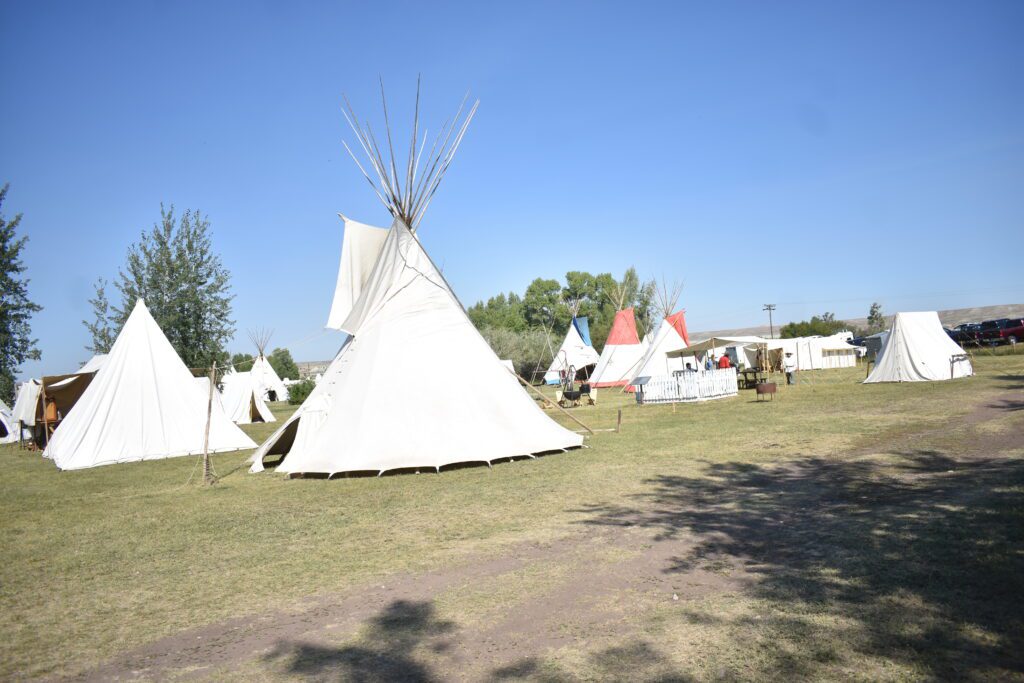
Ashley started the Rendezvous, or trader fairs, in 1825. They occurred annually in the mountains until 1840. Bridger was a notable participant. Trappers and Indians came to at the established location, sometimes in Jackson Hole, sometimes in Pierre’s Hole, Idaho, and around present-day Lander.
There was space there to spread out their tents and teepees, grass for the horses, and lots of good water. Beaver pelts were sold, supplies were purchased for the next trapping season in the far mountains. The mountain men and the Indians held horse races, sang, danced, told tall tales of the mountains, drank and gambled before returning to the beaver streams.
One never knew who would be attending the rendezvous. In 1833, Bridger encountered Scottish adventurer, William Drummond Stewart, who took a liking to the mountain man, and it 1837, Stewart presented Bridger with a suit of armor. An artist who traveled with Drummond, Alfred Jacob Miller did a sketch of Bridger riding decked out in the armor, complete with a plumed helmet and a steel cuirass. It must have been quite a sight. Miller did several well-known paintings of the trappers and the Indians recording first-hand the vanishing fur trade.
The 1837 rendezvous was one of the last. The beaver streams were becoming trapped out, and the beaver were disappearing. Fashions in European changed, from beaver to silk, and the price of beaver pelts took a sharp drop. In 1839, the price of beaver fell from $6 a pelt to $4, yet the prices charged for the commodities needed by the trappers stayed high. It was time to get into a different line of work. The last official rendezvous was held in 1840 near Daniel, Wyoming.
At age 35, Bridger saw the world he had known disappearing. What to do next? He was a blacksmith, a trapper, and an explorer. What could he do with these talents?
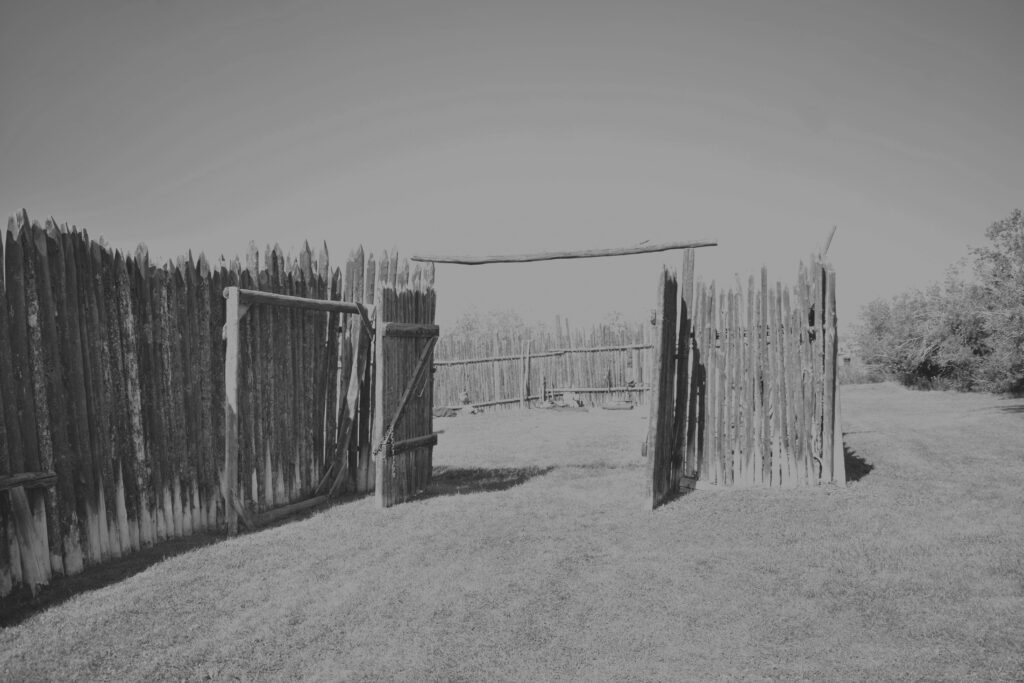
In 1843, Bridger dictated a letter to his old friend, Louis Vasquez, saying he had established a small fort with a blacksmith shop along the emigrant road, on Black Fork of the Green River. Vasquez came to the new fort to become a partner in the enterprise. Bridger knew the Indians, trappers and soldiers. He ran the trading post successfully for several years. The ranch and trading post was situated along the Overland Trail, and it was one of the main hubs of the westward movement. Bridger traded with Mormons, gold hunters, the military, mountain men and Indians.
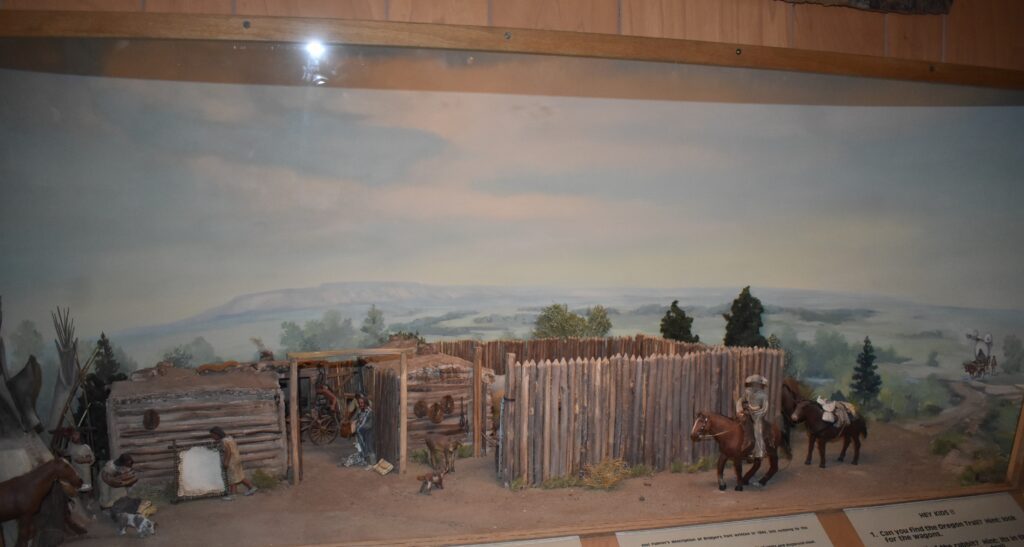
One interesting story about Jim during his years at the fort was published in The Sheridan Post, October 1911.
Jim Bridger and Shakespeare— One of the most noted characters on the border twenty years ago was old Jim Brldger of Fort Bridger, ln Utah (then part of Utah). On one occasion he came to New York. He did not like the narrow down-town streets with high buildings on each side, and complained that he had once lost his way in “Day Street Canon,” and been rescued with difficulty by the police. He liked the theaters, and expressed the utmost delight at performance of “Midsummer Night’s Dream.”
He had no clear idea who Shakespeare was, but conceived and developed the most extravagant admiration for him. Returning to the fort, he sold stock and supplies to the emigrants and other travelers, as in time past. One day man wished to buy some oxen, and Jim said he could have any except one yoke, which he had made up his mind to keep at all hazards. In the morning messenger came to say the man wanted this yoke, and none other. “He can’t have ’em,” said Jim. ‘There’s no use talkin’.”
“Well, he wants them, and is just a-waiting’ for them,” said the messenger. “He’s a-setting there, readin’ book called Shakespeare.” “Eh?” yelled Jim, jumping to his feet. “Did you say—Shakespeare? Here— you, give me my boots.”
He ran to the corral. “Stranger,” said he, “jest give me that book, and take them oxen.”
“Oh no,” said the man. “I only brought the book to read on the way. I will give It to you.”
“Stranger,” said Jim, resolutely, “jest you take them oxen and give me that book,” and so the man did.
Jim hired a reader at $50 per month, and listened Shakespeare every evening. All went well, until one night, as the reader come to the proposed murder of the princess in the tower. Jim sprang from his seat, with blazing eyes, and yelled, in thundering tones, “Hold on there! Jest wait until get my rifle and I’ll shoot the scoundrel!” As one of his old pards remarked, sincerer compliment was never paid Shakespeare.
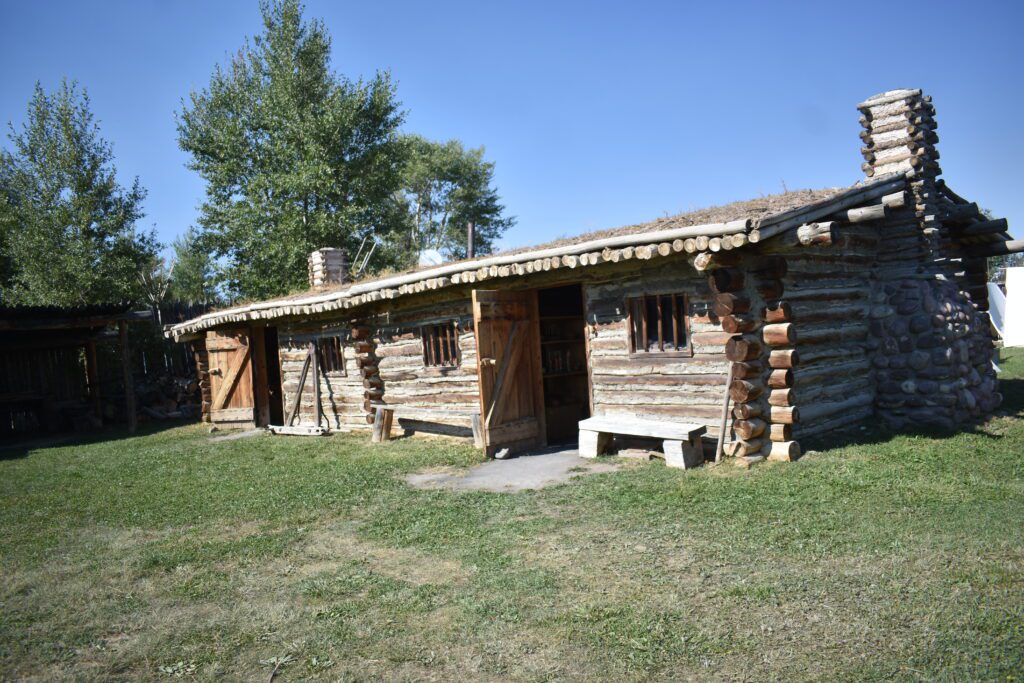
However, all was not well at the fort. Tensions began to build between Bridger and the Mormon leader, Brigham Young, and he and his followers burned the trading post during the Utah War of 1857. In 1858 it was transformed into a military outpost. Major William Hoffman commanded the army depot at Fort Bridger from June until August of 1858 and he was relieved by Brevet Lt. Col. Edward Canby. During the 1860s the Fort was a stop for the Overland Stages and the pony express. The fort was abandoned in 1878, and re-established in two years later, only to close it permanently in 1890.
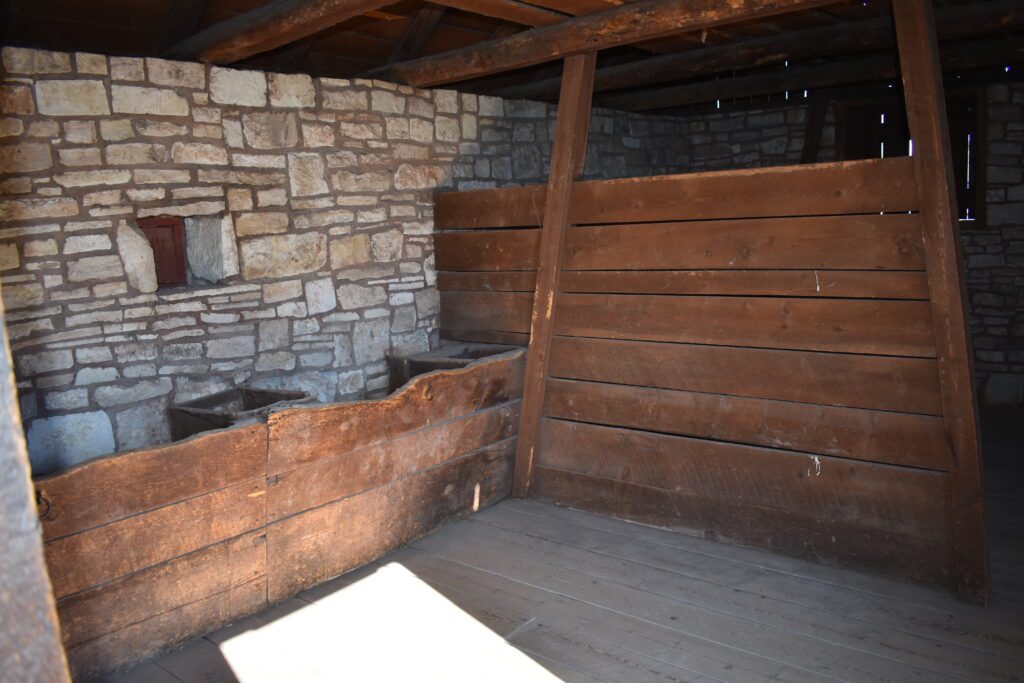
During the 1860s, Fort Bridger troops guarded construction of the Union Pacific Railroad route, the Pony Express, the Overland Stage and Mail Route. In the summer of 1870, Yale Professor O.C. Marsh used the fort as a base camp during one of his geological expeditions.
Today, Fort Bridger is on the National Register of Historic Places and a Wyoming State Historic Site. Each year there is a re-creation of the Mountain Man Rendezvous around Labor Day. The small town of Ft. Bridger draws thousands of people each year to re-create the mountain man era, and the celebrate Jim Bridger, one of the greatest of the mountain men.
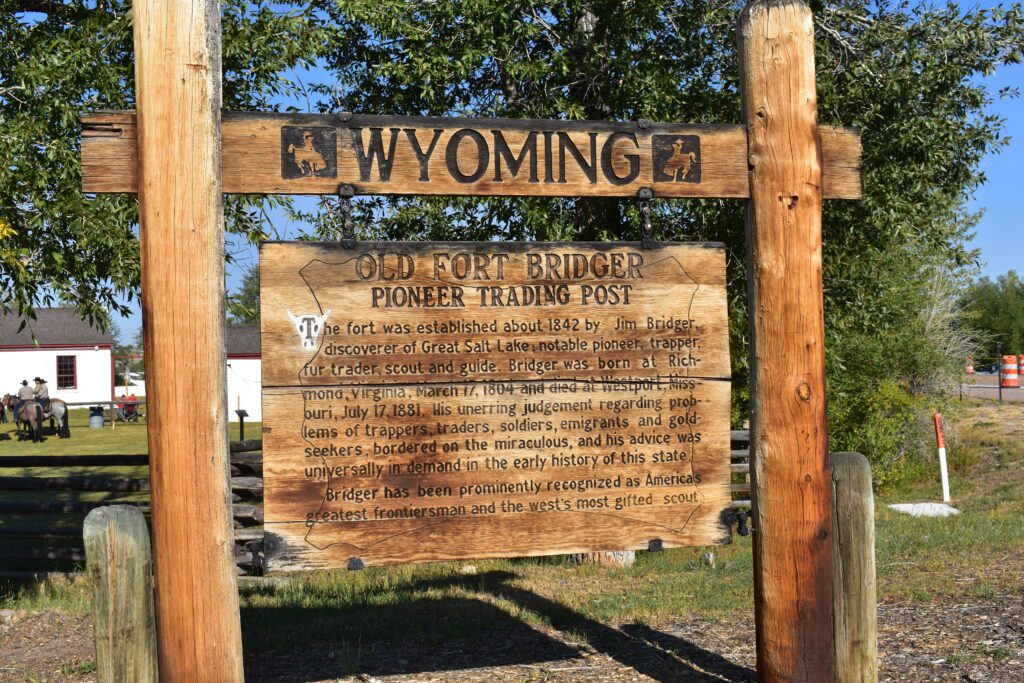
Bridger, losing his trading post, became a scout for the army, but that is another story.


Shelly J Morris
October 17, 2022 at 11:23 am
What an interesting story or Jim Bridger and the mountain men that helped build the west. Thank you for educating me!